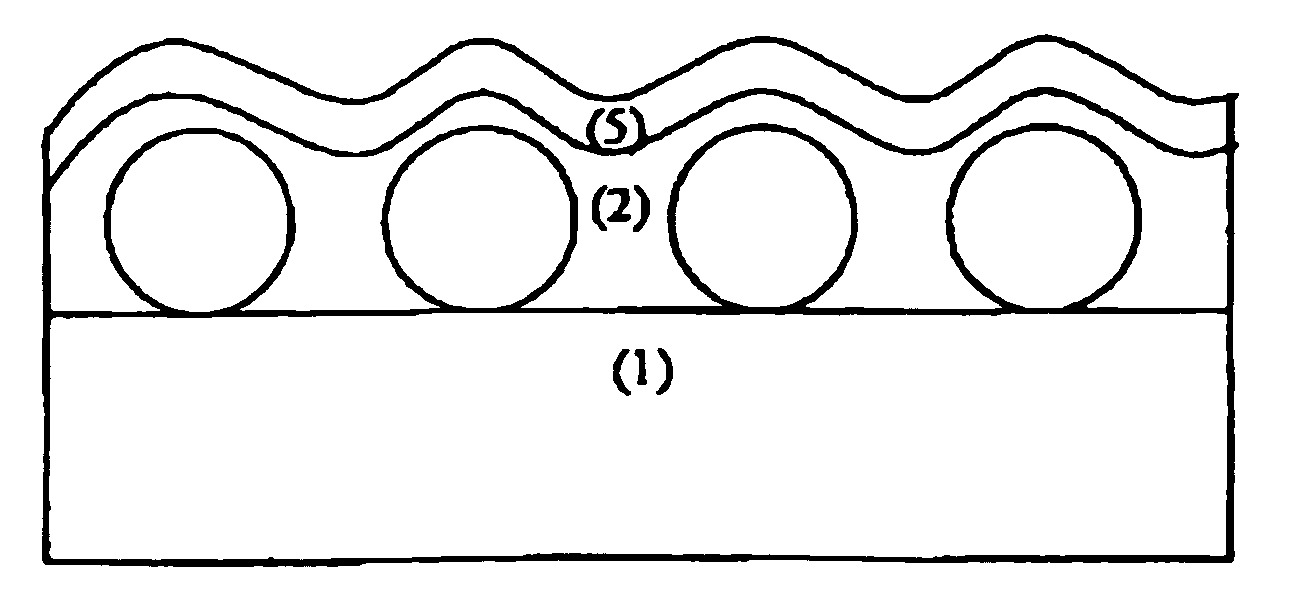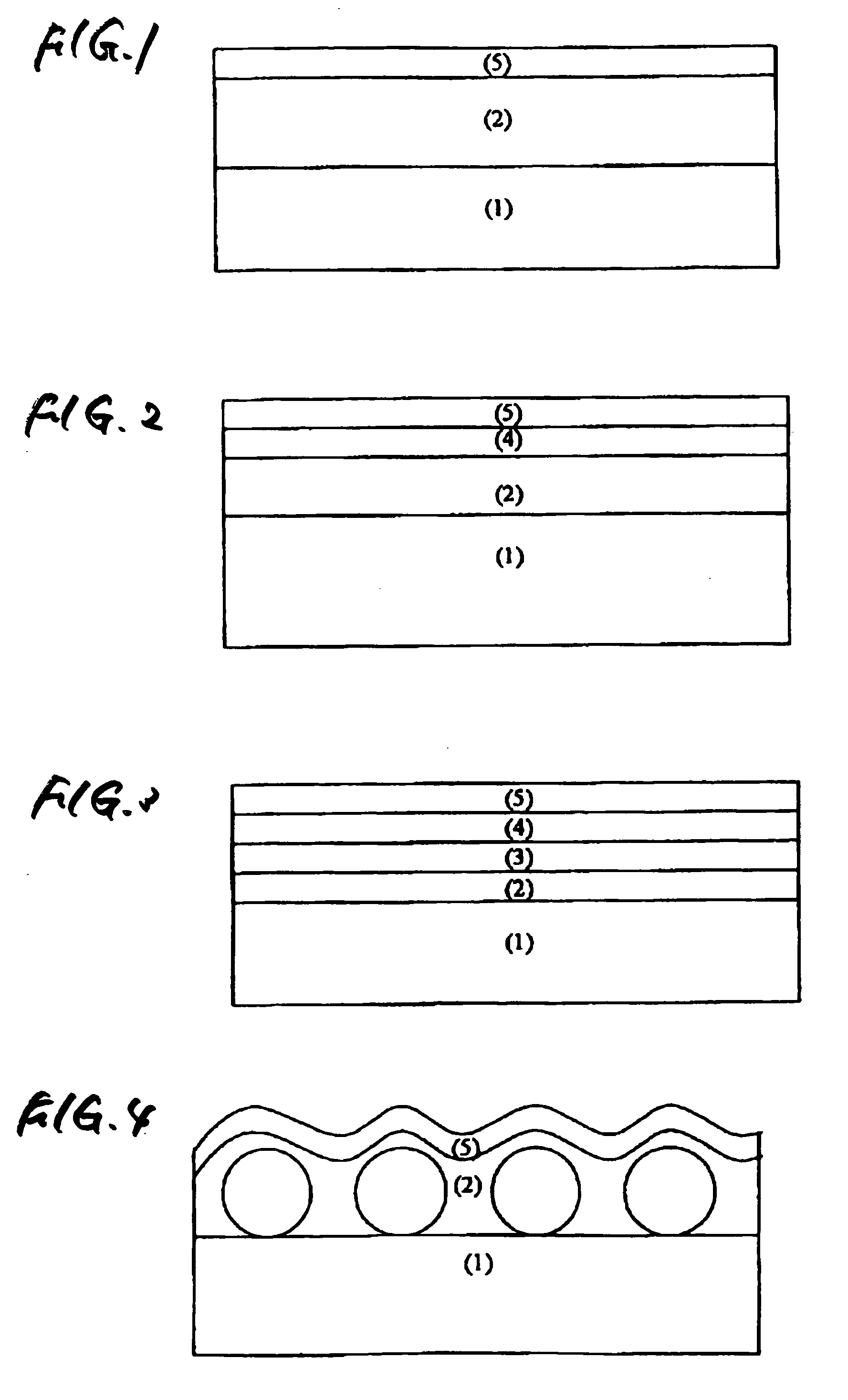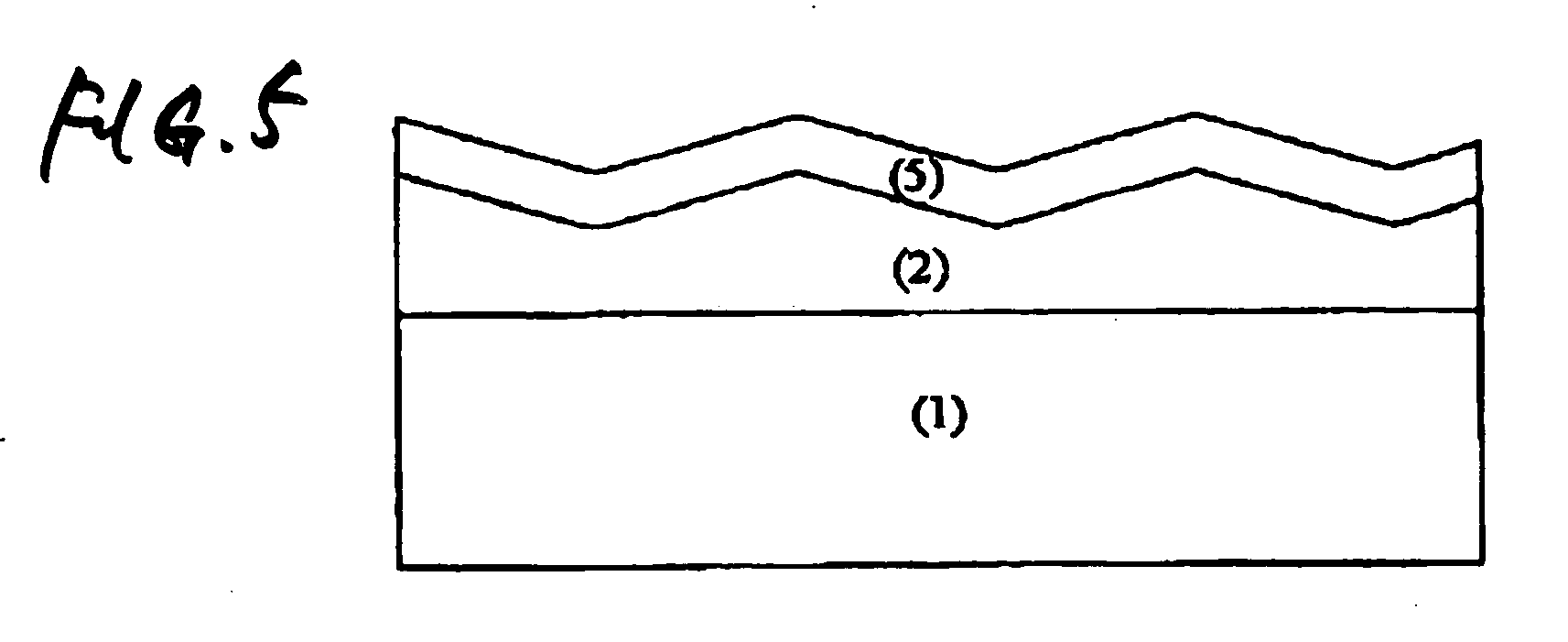Antireflective film and polarizing plate and image display using same
a technology of anti-reflective film and polarizing plate, applied in the direction of instruments, transportation and packaging, synthetic resin layered products, etc., can solve the problems of reducing coating strength or interfacial adhesion, reducing mar resistance, and difficult to establish lower refractive index and higher mar resistance in combination, so as to maintain the stability of coating liquid and excellent mar resistance
- Summary
- Abstract
- Description
- Claims
- Application Information
AI Technical Summary
Benefits of technology
Problems solved by technology
Method used
Image
Examples
synthesis example 1
Synthesis of Fluorine-Containing Polymer (P2)
[0554] 18.5 of ethyl acetate, 8.8 g of hydroxyethyl vinyl ether (HEVE), 1.2 g of “SILAPLANE FM-0725”, a product of Chisso Corporation, and 0.40 g of “V-65” (heat radical initiator, a product of Wako Pure Chemical Industries, Ltd.) were placed in a stainless steel-made autoclave equipped with a stirrer, having an inner volume of 100 ml, and the inside atmosphere of the system was deaerated, and replaced with a nitrogen gas. 15 g of hexafluoropropylene (HFP) was introduced into the autoclave, and the temperature in the autoclave was elevated to 62° C. Pressure when the temperature in the autoclave reached 62° C. was 8.9 kg / cm2. Reaction was continued for 9 hours while maintaining the temperature in the autoclave at 62° C., and when the pressure reached 6.2 kg / cm2, heating was stopped, and the autoclave was allowed to stand to cool.
[0555] When the inner temperature of the autoclave lowered to room temperature, unreacted monomer was purged,...
synthesis example 2
Synthesis of Fluorine-Containing Polymer (P3)
[0556] 30 of ethyl acetate, 8.8 g of hydroxyethyl vinyl ether (HEVE), 0.82 g of “VPS-1001” (microazo initiator, a product of Wako Pure Chemical Industries, Ltd.) and 0.29 g of lauroyl peroxide were placed in a stainless steel-made autoclave equipped with a stirrer, having an inner volume of 100 ml, and the inside atmosphere of the system was deaerated, and replaced with a nitrogen gas. 15 g of hexafluoropropylene (HFP) was introduced into the autoclave, and the temperature in the autoclave was elevated to 70° C. Pressure when the temperature in the autoclave reached 70° C. was 9.0 kg / cm2. Reaction was continued for 9 hours while maintaining the temperature in the autoclave at 70° C., and when the pressure reached 6.0 kg / cm2, heating was stopped, and the autoclave was allowed to stand to cool.
[0557] When the inner temperature of the autoclave lowered to room temperature, unreacted monomer was purged, the autoclave was opened, and the rea...
synthesis examples 3 to 8
Synthesis of Fluorine-Containing Polymers (P1), (P4), (P12), (P15), (P15), (P20) and (P23)
[0558] Fluorine-containing polymers (P1), (P4), (P12), (P15), (P15), (P20) and (P23) were synthesized in substantially the same manner as in Synthesis Example 1 above. Each of the fluorine-containing polymers obtained had a number average molecular weight as shown in Tables 1 and 2 before.
(Synthesis of Curing Catalyst (Salt))
PUM
| Property | Measurement | Unit |
|---|---|---|
| Fraction | aaaaa | aaaaa |
| Fraction | aaaaa | aaaaa |
| Optical reflectivity | aaaaa | aaaaa |
Abstract
Description
Claims
Application Information
 Login to View More
Login to View More - R&D
- Intellectual Property
- Life Sciences
- Materials
- Tech Scout
- Unparalleled Data Quality
- Higher Quality Content
- 60% Fewer Hallucinations
Browse by: Latest US Patents, China's latest patents, Technical Efficacy Thesaurus, Application Domain, Technology Topic, Popular Technical Reports.
© 2025 PatSnap. All rights reserved.Legal|Privacy policy|Modern Slavery Act Transparency Statement|Sitemap|About US| Contact US: help@patsnap.com



